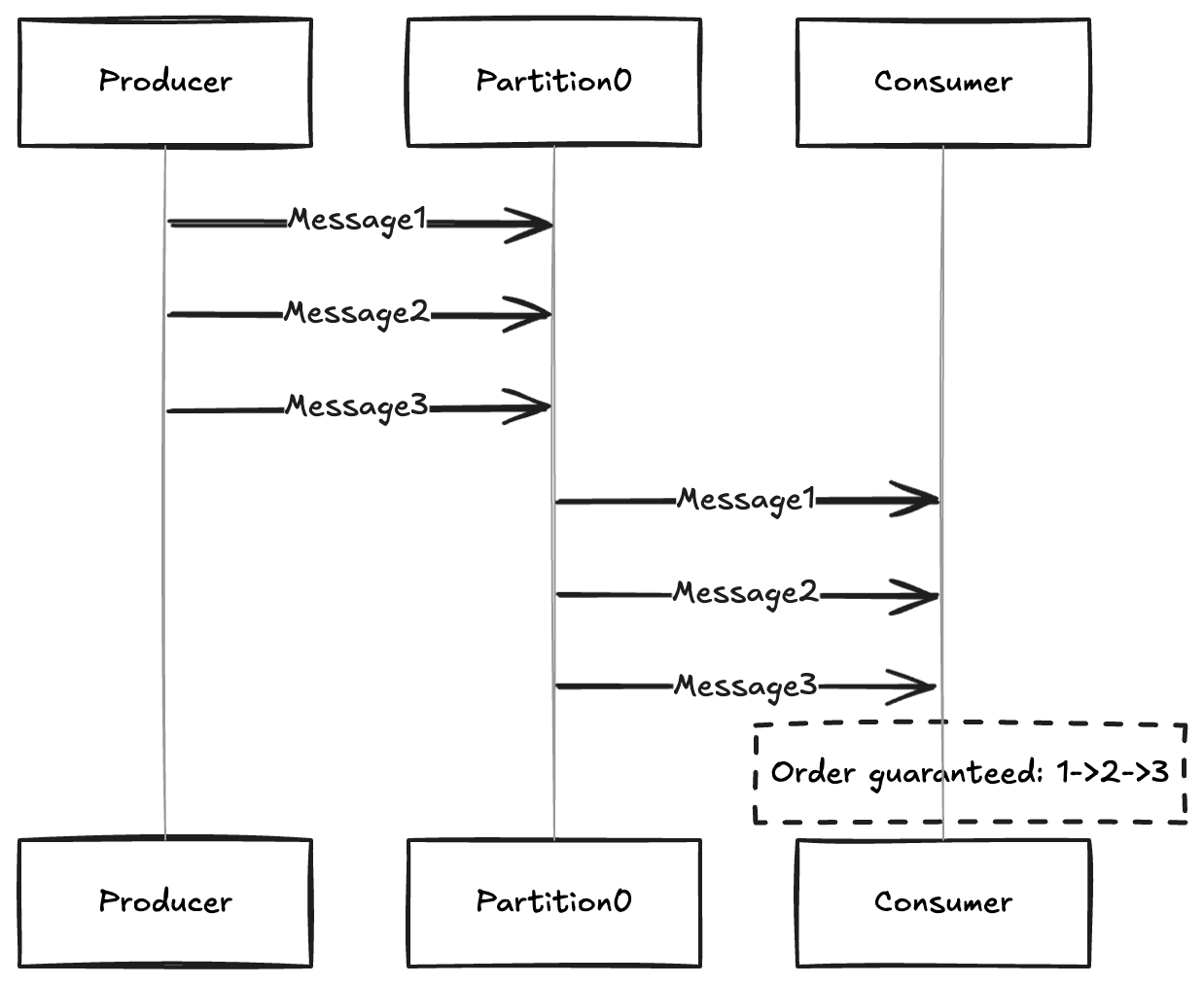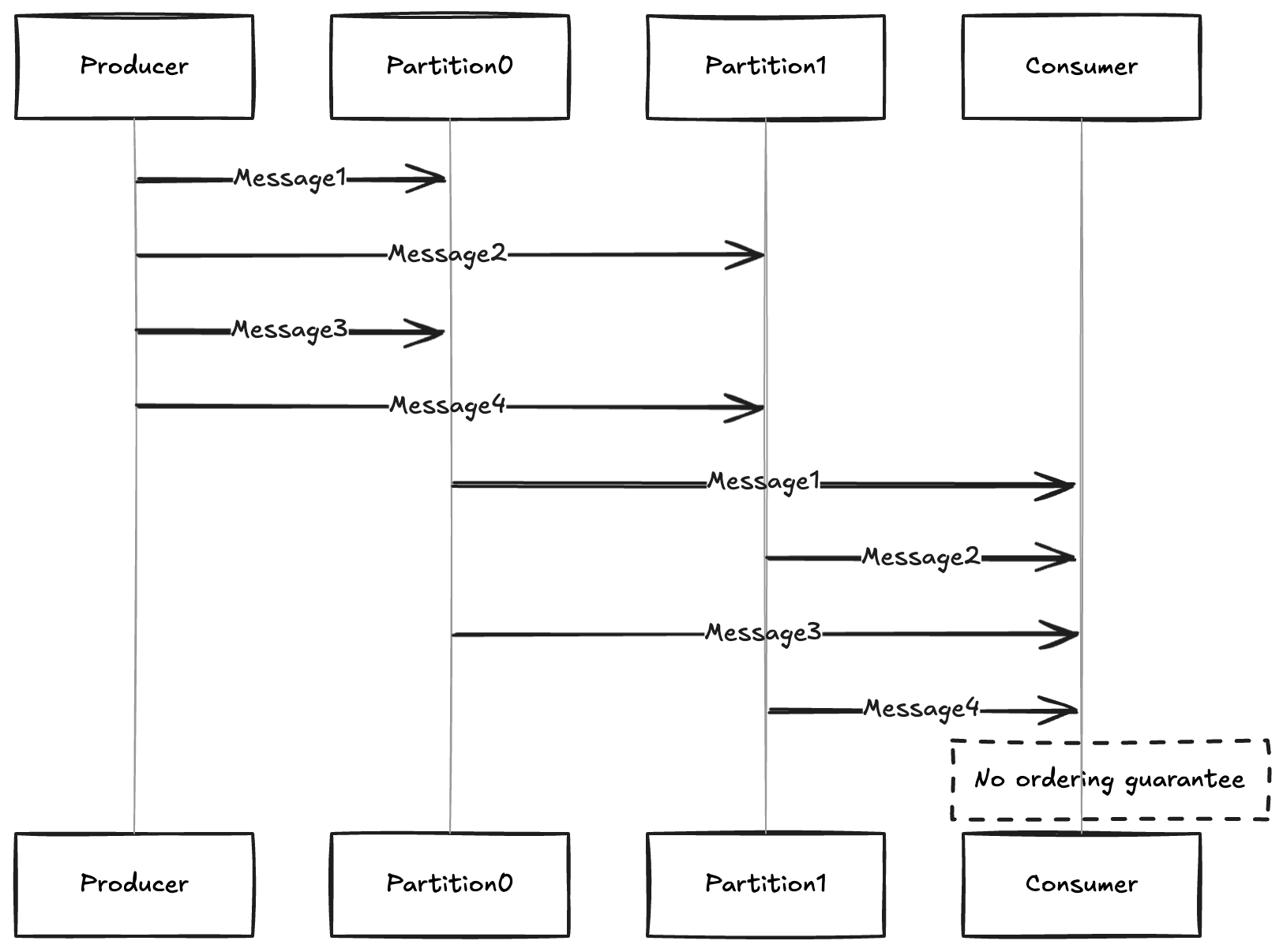How Does Kafka Guarantee Message Ordering?
What is Message Ordering?
Message ordering in distributed systems means maintaining the sequence of messages from production to consumption. For example, in order processing, a payment message must not be processed before its corresponding order creation message - doing so would violate business logic.
Kafka's Ordering Guarantees
Kafka provides a fundamental guarantee: messages within a single partition are consumed in the same order they were written. However, there is no ordering guarantee across different partitions.
Single Partition Ordering

No Cross-Partition Ordering

How to Implement Message Ordering?
1. Producer-Side Guarantees
The producer plays a critical role in ensuring message order:
First, ensure related messages are routed to the same partition:
- Use consistent message keys for related messages (e.g., order_id for all messages of an order)
Then, prevent message reordering and duplication:
- Control in-flight requests to prevent retry-related reordering
- Enable idempotence to prevent duplicate messages
- Configure appropriate retry intervals
// Producer configuration example
Properties props = new Properties();
props.put("max.in.flight.requests.per.connection", 1);
props.put("enable.idempotence", "true");
props.put("retry.backoff.ms", "100");
// Example of using the same key
ProducerRecord<String, String> record =
new ProducerRecord<>("topic", "order_123", "message");
2. Consumer-Side Guarantees
Consumers require specific configurations to maintain message order:
- Maintain one consumer per partition
- Avoid parallel processing to prevent reordering
- Use manual offset commits for better control
- Configure appropriate timeout values
- Minimize consumer group rebalancing
// Consumer configuration example
Properties props = new Properties();
props.put("enable.auto.commit", "false");
props.put("max.poll.interval.ms", "300000");
props.put("session.timeout.ms", "10000");
// Manual commit example
while (true) {
ConsumerRecords<String, String> records = consumer.poll(Duration.ofMillis(100));
for (ConsumerRecord<String, String> record : records) {
// Process message
processMessage(record);
}
// Commit after processing
consumer.commitSync();
}
3. Broker Configuration
Brokers also need proper configuration to support ordering:
- Disable message reordering (log.message.timestamp.type=CreateTime)
- Configure replica sync mechanism (min.insync.replicas)
- Prevent ordering issues from leader changes (unclean.leader.election.enable=false)
# Broker configuration example
log.message.timestamp.type=CreateTime
min.insync.replicas=2
unclean.leader.election.enable=false
Common Ordering Scenarios
1. Order Status Flow
Order status changes must follow a strict sequence:
- Order Created
- Order Paid
- Order Shipped
- Order Delivered
2. Inventory Changes
Inventory messages must be processed in operation sequence:
- Stock In: +100 (Total: 100)
- Stock Out: -20 (Total: 80)
- Stock Out: -30 (Total: 50)
If messages are processed out of order, like processing stock-out before stock-in, it could lead to incorrect inventory calculations or negative stock.
3. Database Change Sync
Database change events must be synchronized in operation order:
- Insert Record
- Update Record
- Delete Record
If the order is wrong (like receiving an update message before insert), it could lead to data inconsistency.
Summary
Kafka's ordering guarantee is limited to the partition level. To implement reliable message ordering, you need to:
- Use message keys appropriately for routing
- Configure producers, consumers, and brokers correctly
- Implement ordering guarantees at the application level
Implementing these principles correctly is essential for maintaining message order in Kafka-based systems.
Related Topics: